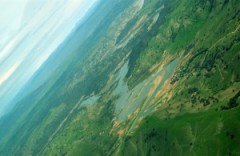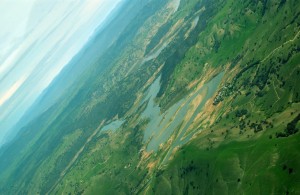 While the news coming out of forests is often dominated by deforestation and habitat loss, new research published in Nature Climate Change shows that the world has actually got greener over the past decade.
While the news coming out of forests is often dominated by deforestation and habitat loss, new research published in Nature Climate Change shows that the world has actually got greener over the past decade.
Despite ongoing deforestation in South America and Southeast Asia, the decline in these regions has been offset by recovering forests outside the tropics, and new growth in the drier savannas and shrublands of Africa and Australia.
The research utilised a new technique called passive microwave remote sensing to map changes in vegetation biomass using satellite measurements of changes in the radio-frequency radiation emitted from the Earth’s surface. The radiation varies with temperature, soil moisture and the shielding of water in vegetation biomass above the ground.
This vegetation information was extracted from several satellites and merged them into one time series covering the last two decades. This allowed tracking of global changes in biomass from month to month, something that was not possible before.
For the period 2003-12, the research found that the total amount of vegetation above the ground has increased by about 4 billion tonnes of carbon.
On average, Australia is “greener” today than it was two decades ago. This is despite ongoing land clearing, urbanisation and the recent droughts in some parts of the country.
However, the increase in vegetation has not been uniform. The largest increases are in northern Australia, with lesser increases in southern Australia and a small decrease in southeastern Australia.
The world’s vegetation plays an important role in slowing down climate change. About a quarter of all carbon emissions from human activities are removed by terrestrial vegetation, with the size of the carbon land sink increasing over time.
However, it remains to be seen how the increased climate variability that accompanies climate change will affect this terrestrial “carbon sink” in future. This is particularly true for seasonally dry ecosystems that experience fires, such as Australia’s savannas, where a single fire event can easily remove the carbon stored in plant biomass over many previous years. The future interaction between climate variability, vegetation and fire is difficult to predict and remains the focus of intense research.
Re-post ~ Despite decades of deforestation, the earth is getting greener | ECOS
